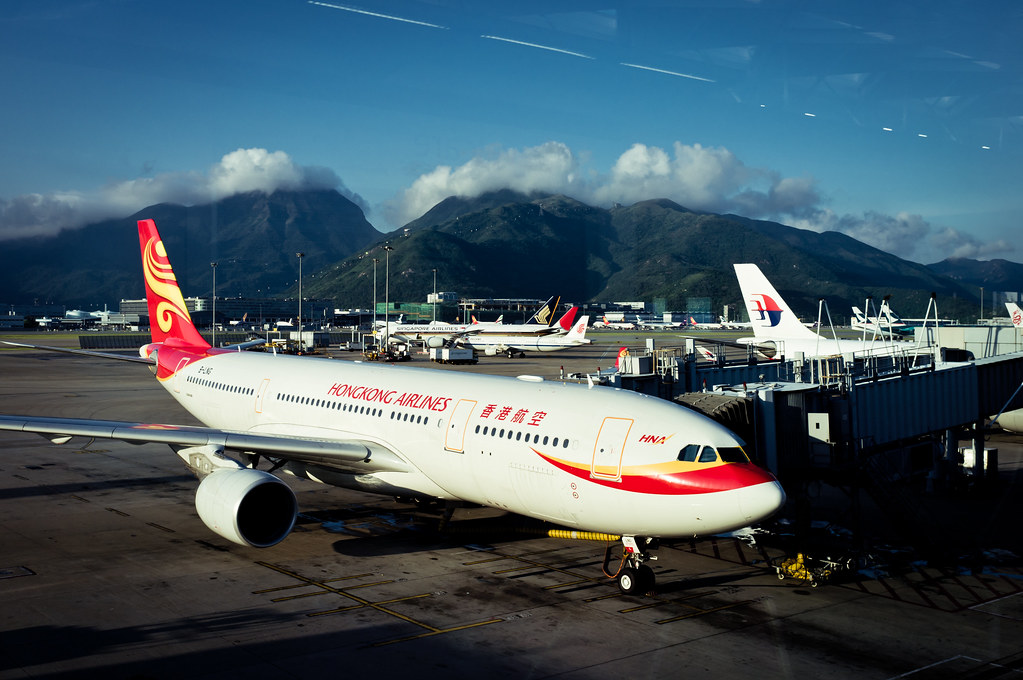 Hong Kong Airlines announced news plans to grow the airline recently. The carrier said it will resume its Gold Coast direct service on 17 January 2025 (four times weekly), providing passengers with convenient travel options between Hong Kong, the Greater Bay Area, and the Gold Coast. It will also resume its Vancouver route on the following day, 18 January 2025 (two times weekly, ticket reservations will be available soon), which marks its official return to the long-haul international market. This strategic move signifies the airline’s transformation from a regional carrier to an international airline, with a focus on expanding its global route network.
Hong Kong Airlines announced news plans to grow the airline recently. The carrier said it will resume its Gold Coast direct service on 17 January 2025 (four times weekly), providing passengers with convenient travel options between Hong Kong, the Greater Bay Area, and the Gold Coast. It will also resume its Vancouver route on the following day, 18 January 2025 (two times weekly, ticket reservations will be available soon), which marks its official return to the long-haul international market. This strategic move signifies the airline’s transformation from a regional carrier to an international airline, with a focus on expanding its global route network.
Following a successful restructuring last year, Hong Kong Airlines has been actively improving its services and expanding its business. Through strategic planning, the airline has demonstrated a strong recovery capability by optimising its route network and adjusting its fleet structure, which now covers more than 30 destinations.
This year, the number of flight sectors has fully recovered to pre-pandemic levels, with an average passenger load factor of approximately 85%. The airline expects to reach its annual traffic target of carrying more than 5 million passengers by the end of 2024. Additionally, bookings for the Christmas and Lunar New Year period have already reached 85%, with that for the ski resort routes in Northeast Asia reaching 90%. In response to this strong demand, the airline will increase flight frequency on relevant routes from December.
Fleet expansion
To support its business growth, Hong Kong Airlines has expanded its fleet this year, introducing multiple Airbus A330-300 wide-body aircraft to support medium- to long-haul routes. The airline has also introduced its first A321 aircraft, configured with 220 all-economy class seats, to increase passenger capacity and operational efficiency. By the end of this year, Hong Kong Airlines’ fleet is expected to grow to around 30 aircraft and the company will continue to expand the fleet size as needed to further increase its capacity.
The diversified fleet configuration will support flight flexibility and coverage, facilitating passengers with convenient access from Hong Kong to popular tourist destinations in mainland China, Japan, South Korea, Southeast Asia, Australia, the United States, Canada, and Europe. In addition to operating its own routes, the airline will continue to collaborate with partners to expand its codeshare network, provide seamless sea-land-air intermodal transportation, and strive to offer service diversity.
Third runway
The third runway system (3RS) at Hong Kong International Airport is scheduled to fully commence operations at the end of November, which will significantly enhance the airport’s throughput, optimise flight departure and arrival processes, and improve operational efficiency and passenger experience. Leveraging Hong Kong’s unique geographical advantages to, connect mainland China with the rest of the world, as well as the opportunity brought by the 3RS, Hong Kong Airlines will utilise the “airport city” infrastructure and surrounding aviation network to deepen cooperation with cities in the Greater Bay Area (GBA), and promote intermodal transportation, such as seamless “air-land-air” transfers via the Hong Kong-Zhuhai-Macau Bridge, to provide passengers with a more convenient travel experience.
Starting this winter, the airline will increase flights to Seoul (twice daily) and Tokyo (five times daily), while Sapporo will become a daily flight. It will also launch Sendai route in December and resume flights to the Gold Coast and Vancouver in January 2025, demonstrating its confidence in the capacity of the 3RS and commitment to exploring more potential routes to strengthen ties with Belt and Road countries and international markets.
To cope with business growth, Hong Kong Airlines has recruited over 600 new employees this year, many of whom have already filled the frontline positions, bringing the total number of cabin crew to more than 1200. Looking ahead, the number of employees is expected to increase by 60% next year, with a 60% increase in pilots and a 1.6-fold increase in cabin crew. Recruitment will continue in the local market as well as the GBA, South Korea, Japan, Southeast Asia and beyond.
The airline has prioritised the restoration of in-flight entertainment systems on multiple A330 aircraft, with some of them introducing wireless streaming technology, allowing passengers to access and enjoy a wide range of content using their personal mobile devices. The airline targets to fully restore full service by 2025.


